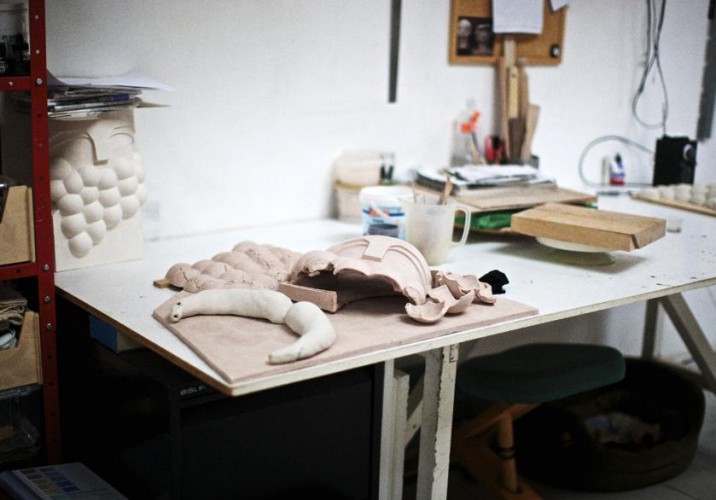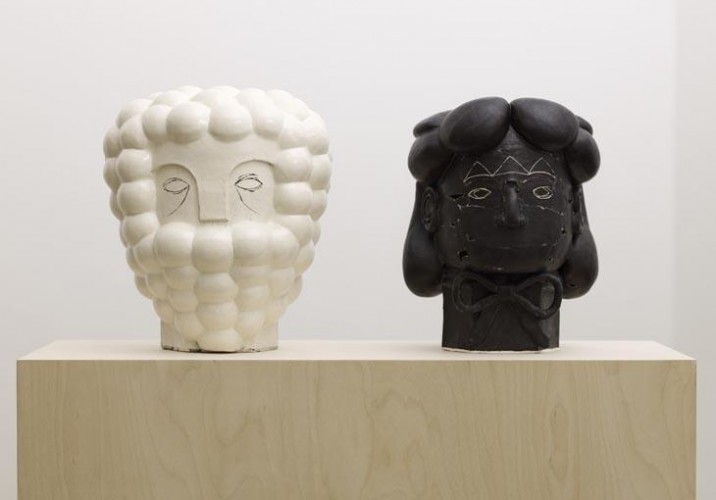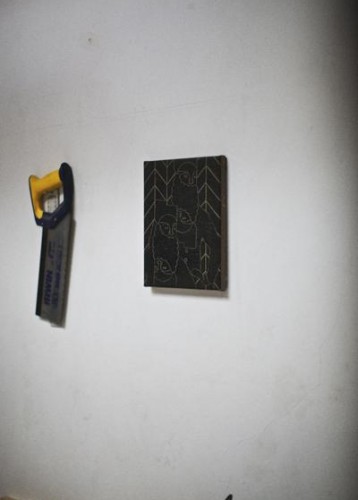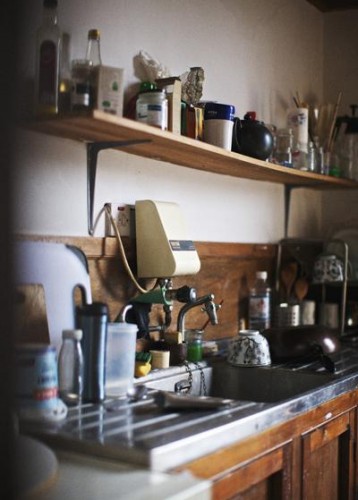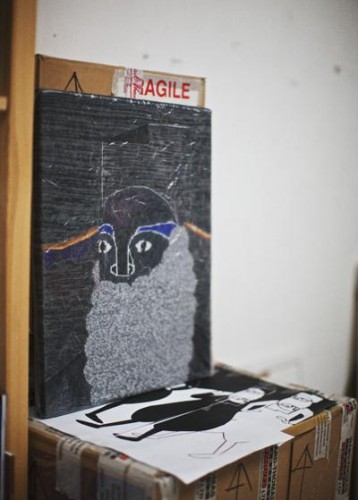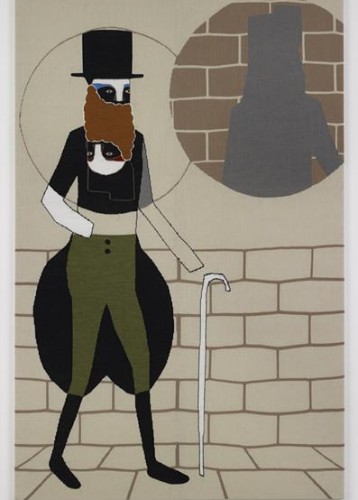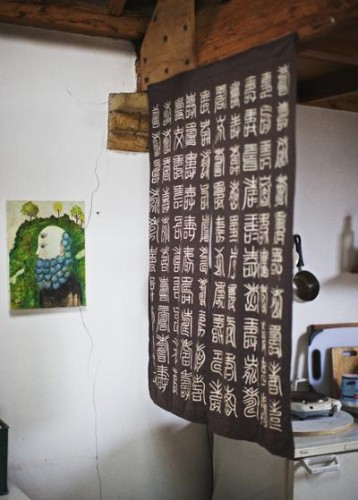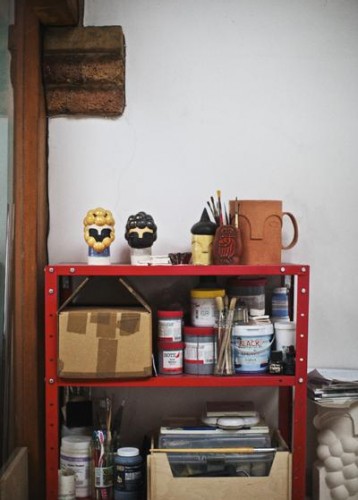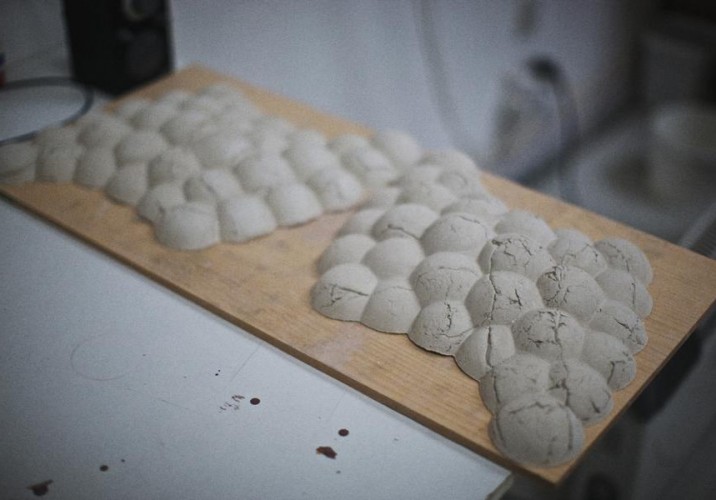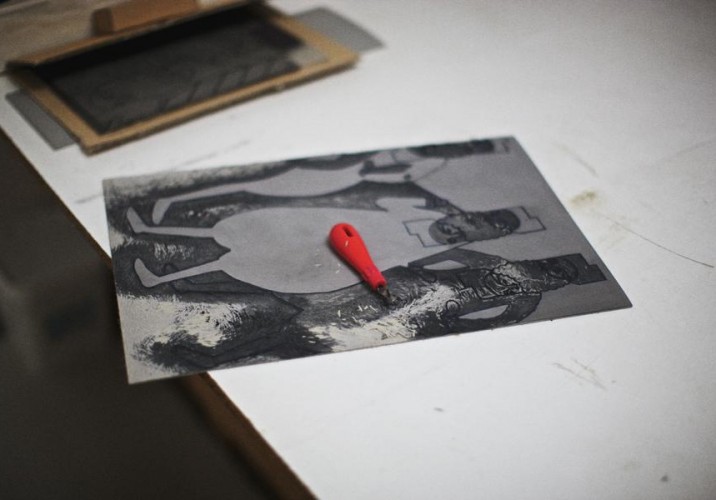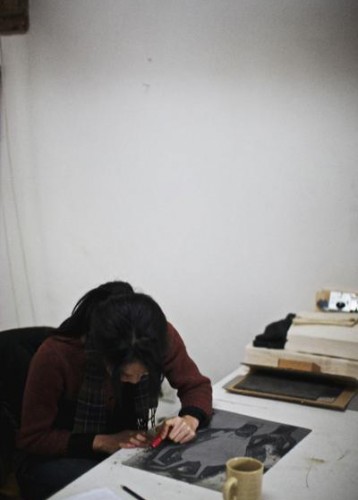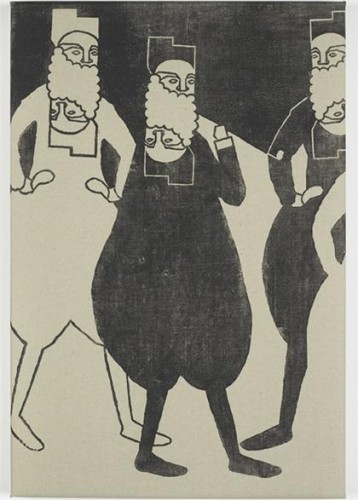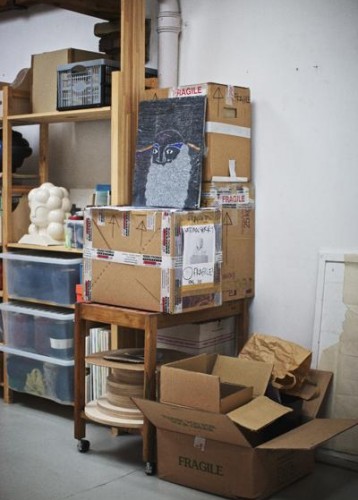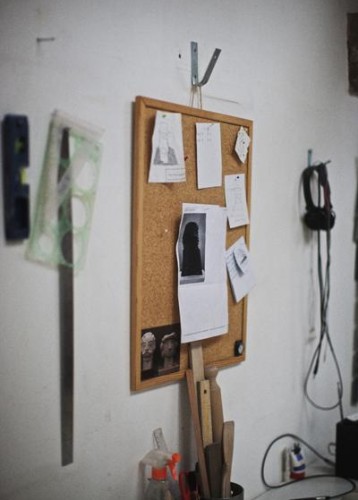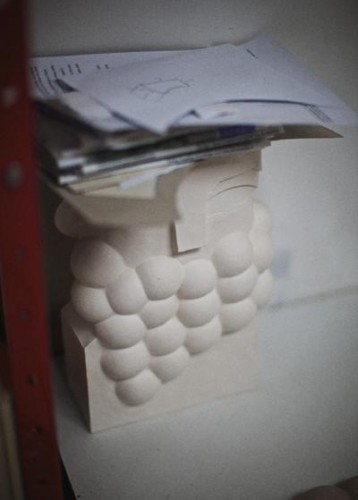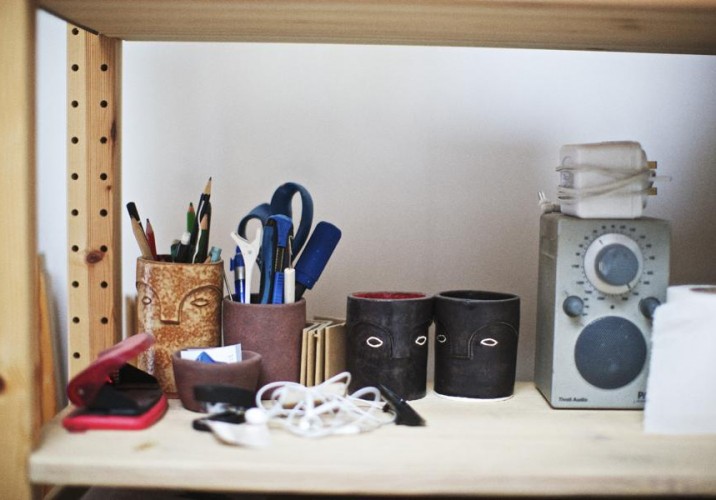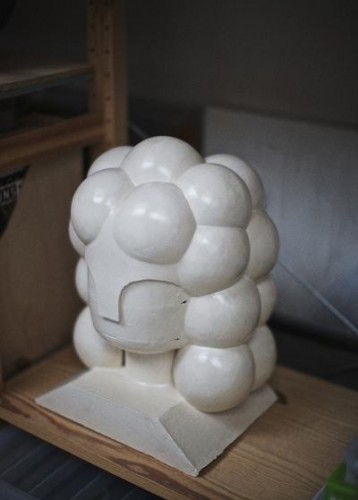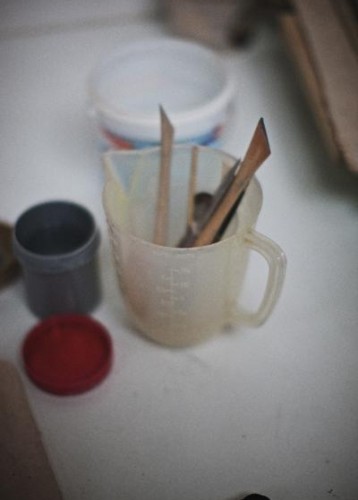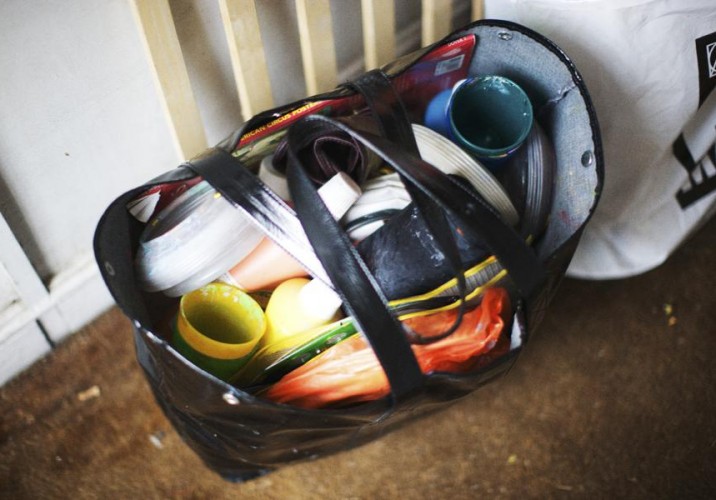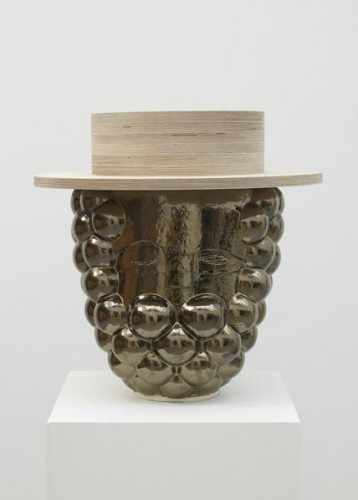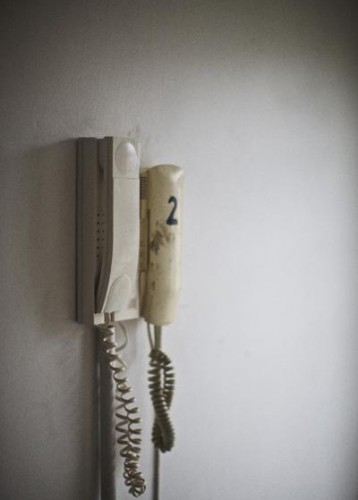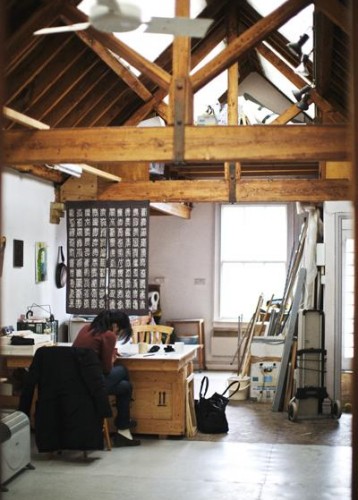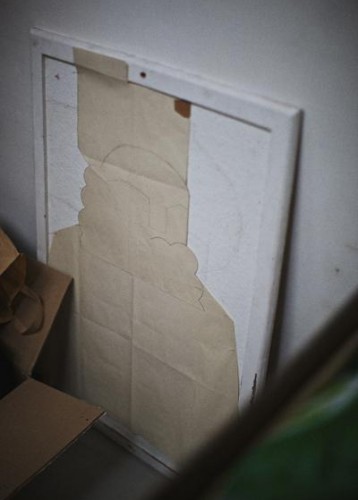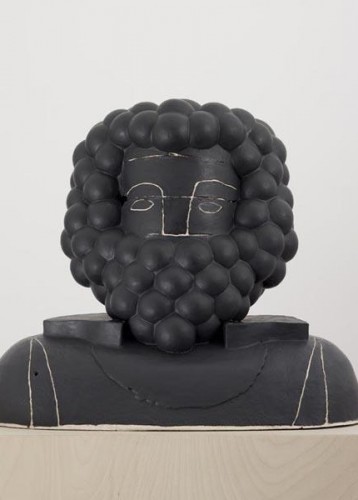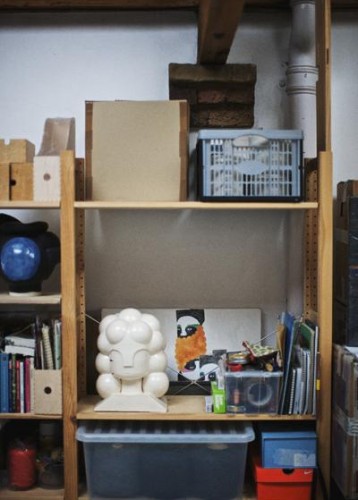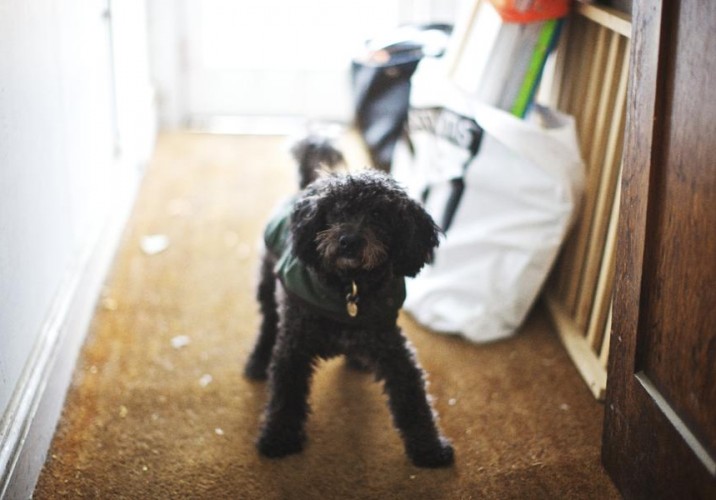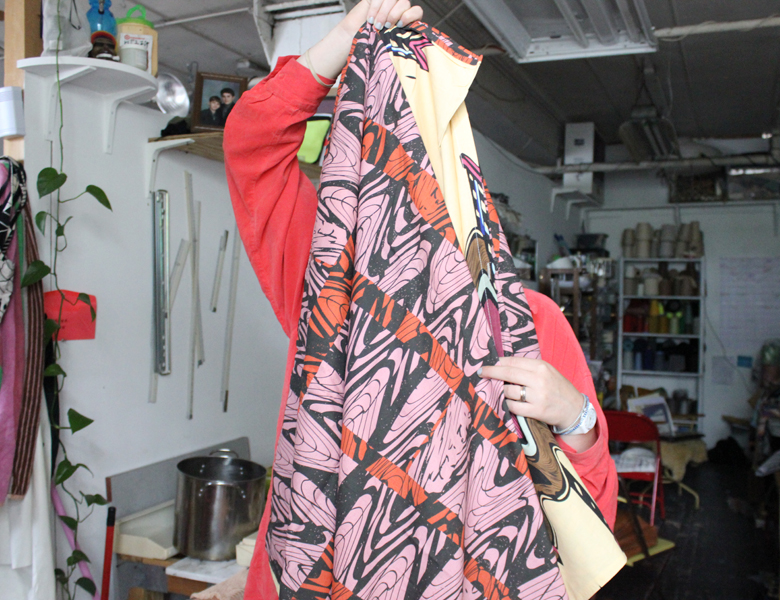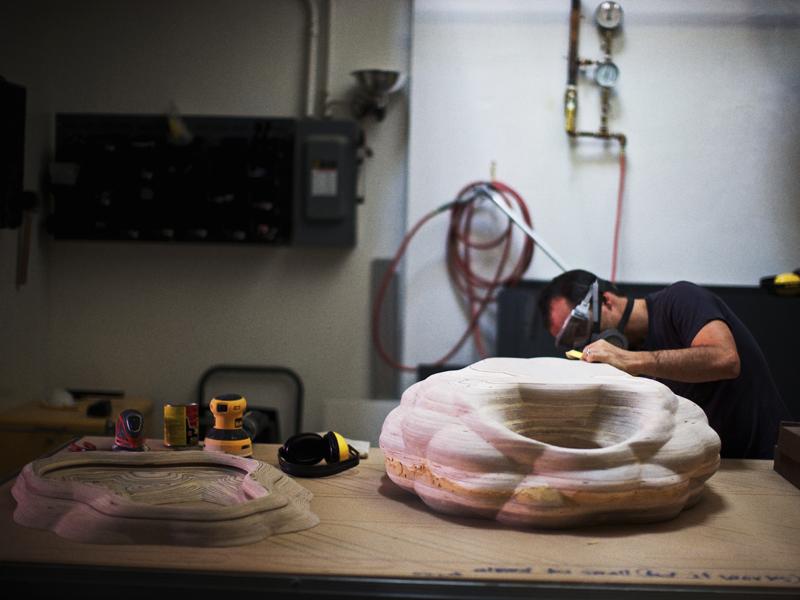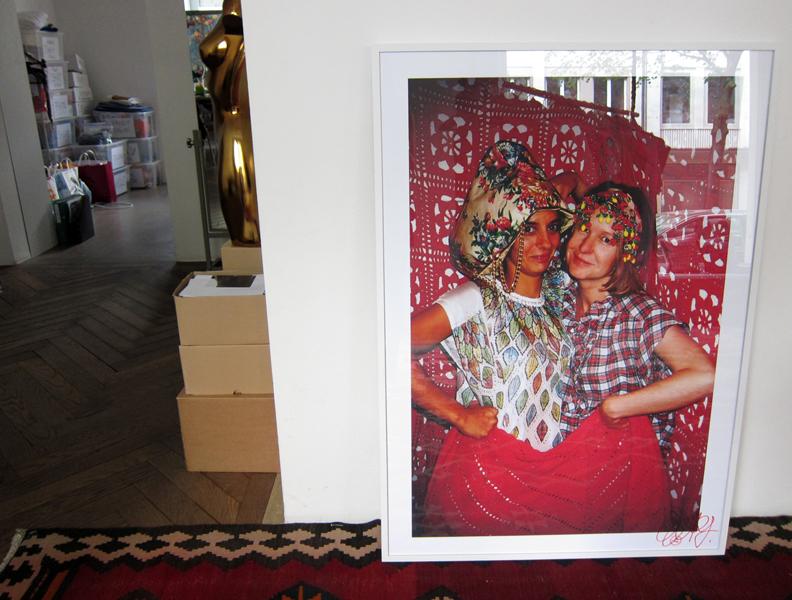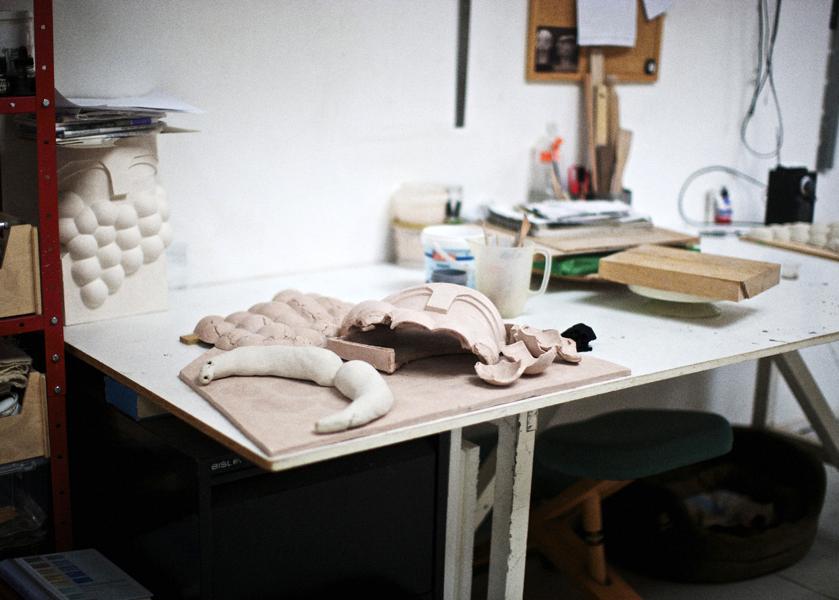
11.19.12
Studio Visit
Renee So, Artist
STUDIO PHOTOS BY PAUL BARBERA
London artist Renee So found the inspiration for her current body of work in the hallowed halls of the Victoria and Albert Museum, where she’d stumbled upon a collection of so-called German Bellarmine jugs — stoneware vessels that 16th- and 17th-century artisans carved to look like portly bearded woodsmen, purposefully firing them full of cracks so they’d resemble archaeological relics. The bulbous ceramic busts that So has been sculpting in their likeness for the last five years carry a similar chronological dissonance, conjuring not just Germanic folk art but Greco-Roman sculpture, traditional playing cards, mid-century pottery, and contemporary illustration. In her drawings, relief prints, and weavings, which she makes by hand on a knitting machine, these enigmatic characters grow limbs and promenade down the street. “My desire to knit pictures was inspired by the beautiful tapestries I would see in historic houses and museums in Europe,” So says. Just about the time that we were turned onto her work by a London curator friend, we realized that Sight Unseen contributor Paul Barbera had shot her studio for his blog Where They Create, and we couldn’t resist featuring his images here, alongside a short interview with the multi-talented artist herself.
I see that you name all of your sculptures. Do you make up stories about them as well?
“I named the first batch of heads (9 in total) as I viewed them all as individuals with there own unique characteristics, though I didn’t go so far as to invent stories or personal histories for them. The reason for this was to maintain a sense of mystery and ambiguity in terms of their origin and historical period. From about 2010 onwards, I stopped naming them and they became anonymous and much more of a type, just being called Bellarmine I, II, III, IV, etc. The inscrutability is intentional then, as they are, after all, imaginary.”
I also read that you’re a “craft nut,” and that you use a manual knitting machine, etc. Do you tend to work against the craftiness of your methods when it comes to the final pieces, or work with it?
“The craft element of my work is integral and inherent in everything I make — it informs my choice of materials which also determines what I can and cannot do with these materials. I don’t feel I need to downplay or even highlight the techniques used in my work, it’s just the foundation of it, and I try to build on that to create something personal and unique to me. While the work is not necessarily rough, it does look handmade. Even though I’m using a machine to knit, there are still glitches and imperfections due to the handling of the wool and manipulation of colors.”
Can you talk about the tools you keep in your studio, and some of the methods you use to create your sculptures and tapestries?
“Well, with the knitting, the tools are pretty straightforward. I use the machine and follow a knitting chart which I prepare for each work. For the ceramics, my tools are basic kitchen tools and utensils. My essentials are a lazy susan type stand which can spin around, balls of various sizes to make the hair, a rolling pin, a little knife, a wooden frying pan flipper, and lots of plastic to stop the work from drying out. I work mostly with slabs, which I assemble from the bottom up.”
Your inspiration for these pieces was the collection of Bellarmines at the V&A; do you have a jug collection of your own?
“No, I don’t collect Bellarmine jugs or anything else. I try not to look at them too much as I’m not interested in literal interpretations.”
